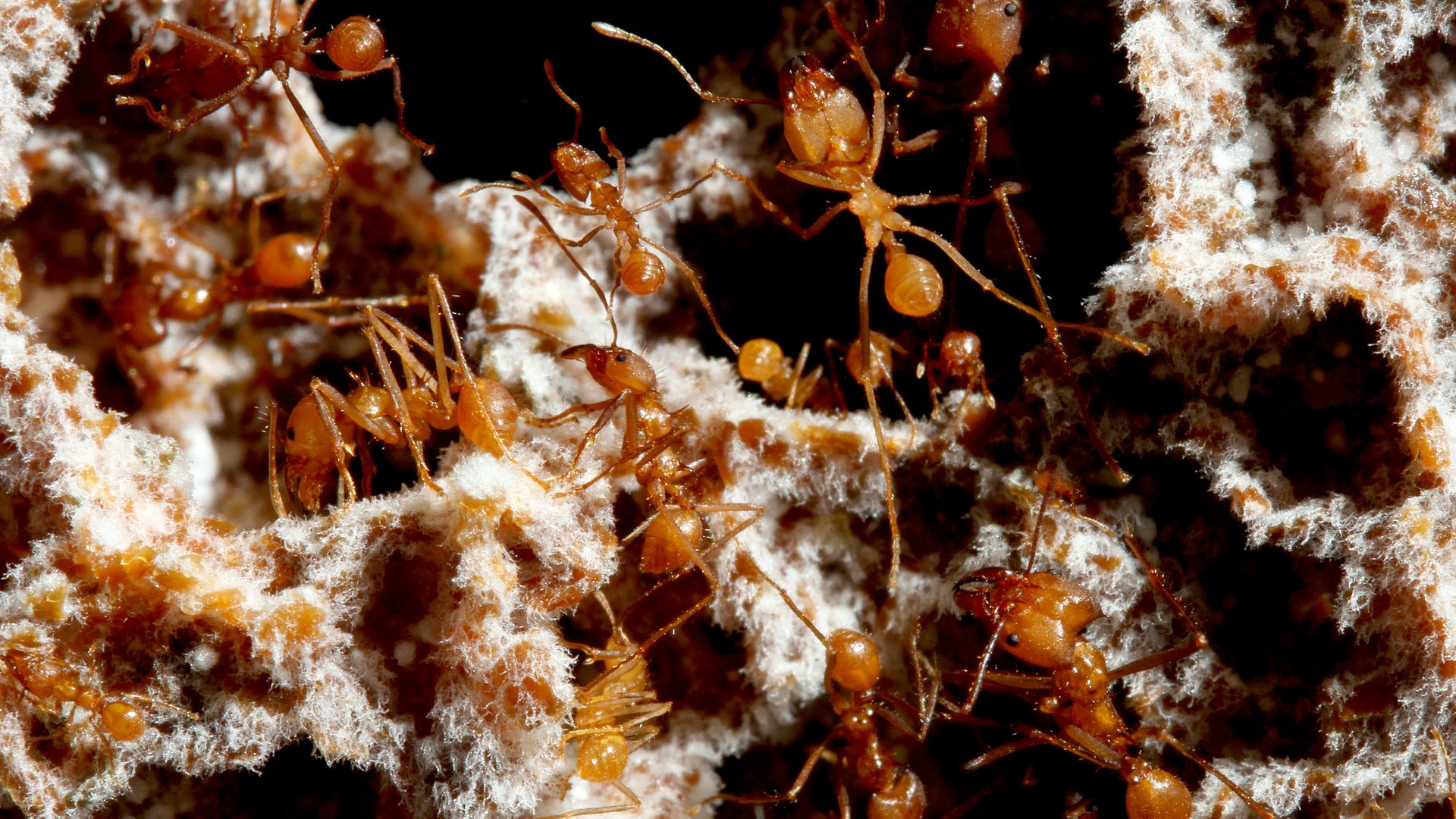Symbiosis is when two organisms from different species live together for an extended length of time. At least one of them must find the situation advantageous or even necessary.
Symbiosis is when two organisms from different species live together for an extended length of time. At least one of them must find the situation advantageous or even necessary.
Who has the advantage?
The partners in symbiosis are called symbionts. The larger organism is termed the host. A symbiotic relationship can be advantageous for both organisms. However, it can also be advantageous, necessary or even disadvantageous for only one partner. The last case is termed parasitism.
Nutritious leaf mush
One example of symbiosis is the partnership between leaf-cutter ants and fungi. The ants maintain the fungi as a source of food for themselves and their larvae. In turn, the fungi need the ants to provide nutritious biomass produced from leaves. This is a symbiosis in which both partners gain an advantage and is termed mutualism.
A good host
We humans also live in symbiosis with other organisms. One example is our partnership with bacteria that inhabit our skin and our intestines and help us live more efficiently. Ten times as many bacteria inhabit a human body as there are cells in that body. The vast majority of these bacteria are helpful and sometimes necessary for our survival.

